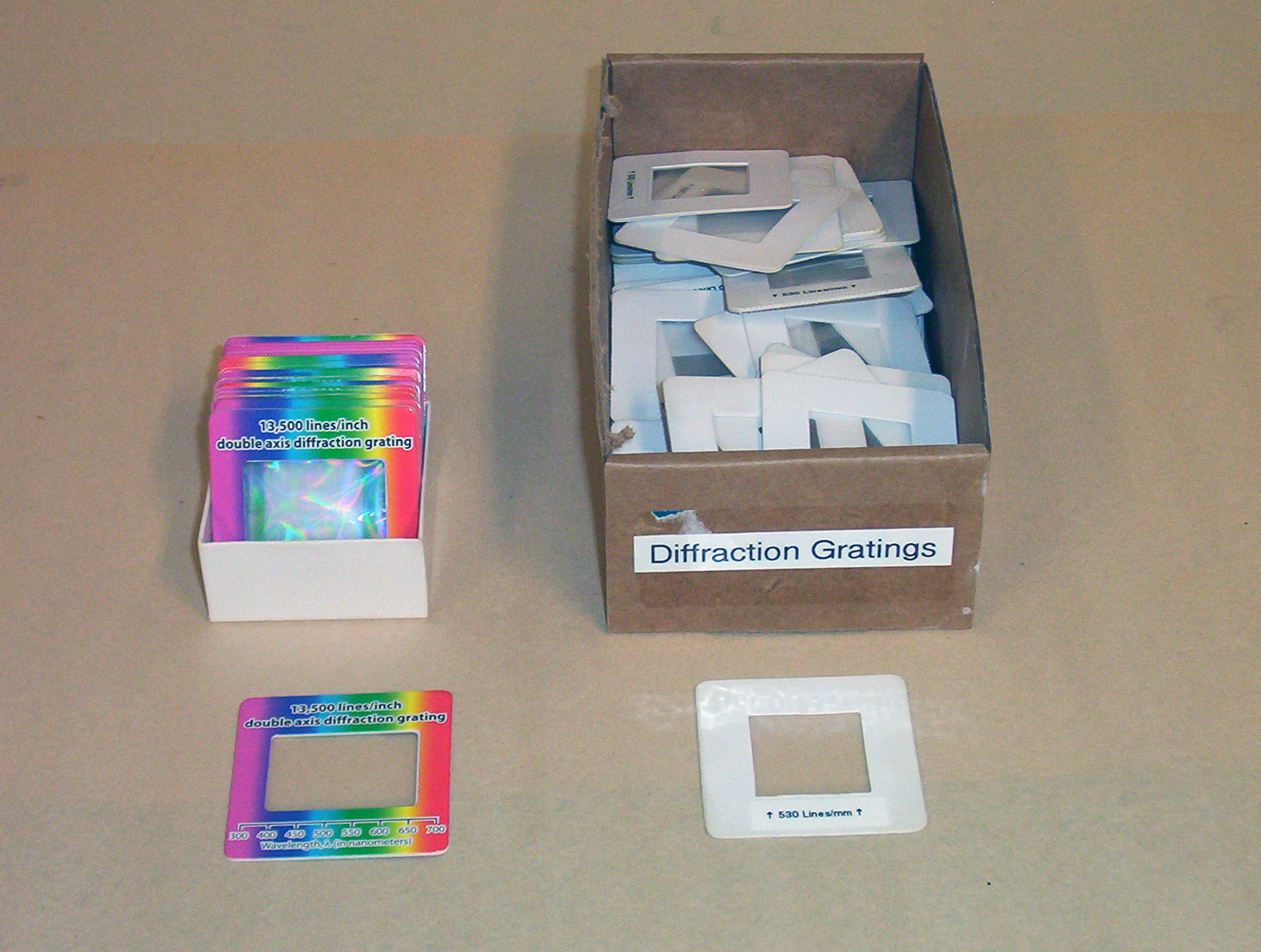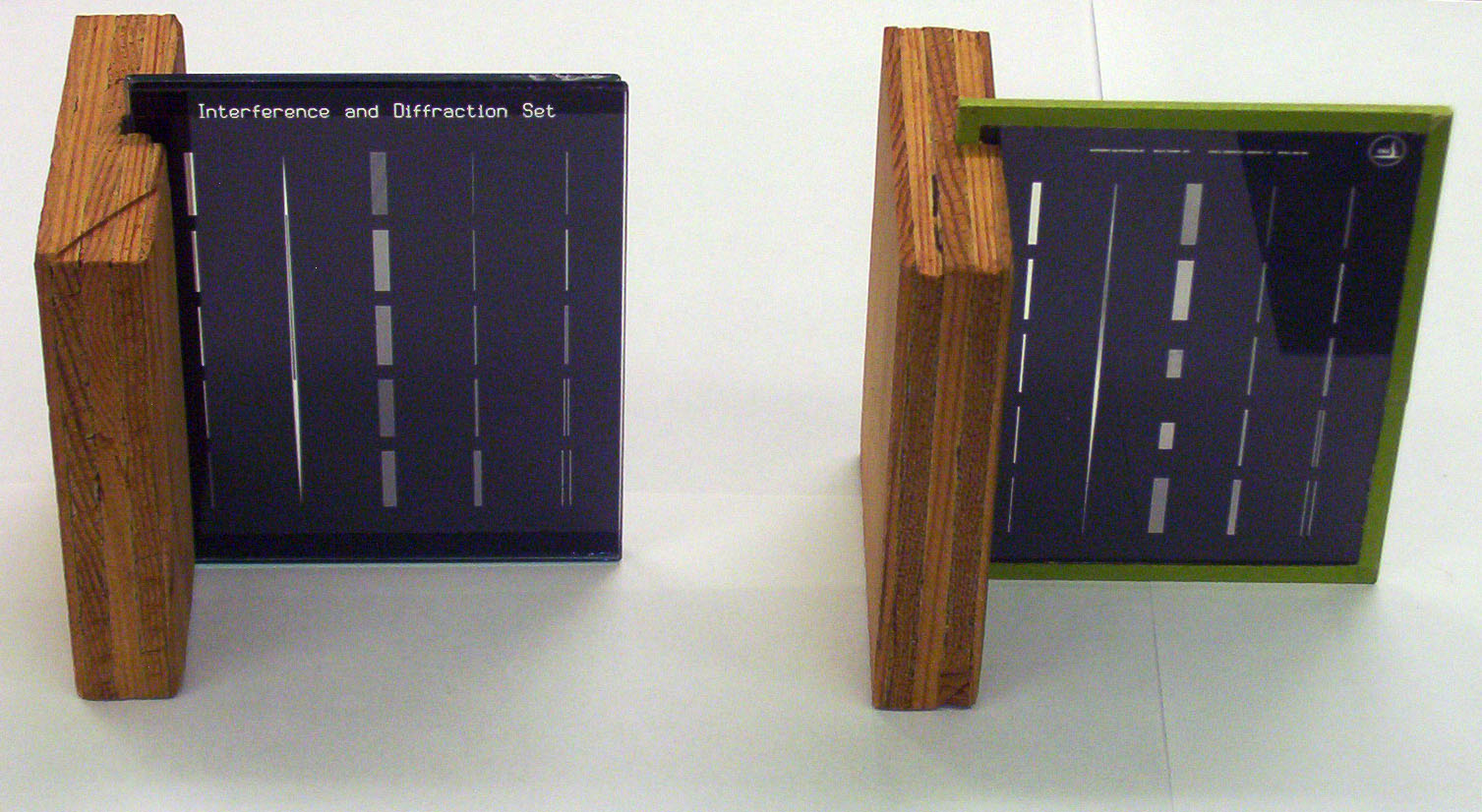Assorted gratings and apertures for viewing spectra demonstrating interference & diffraction.
We have a wide assortment of gratings and apertures. Here are some that are frequently used:
- 2×2 diffraction gratings: We have two kinds of gratings that are mounted in cardboard slides. The ones mounted in white slides are generally more useful than the ones in the colorful slides. There are about 50 of the white gratings, far fewer of the colorful gratings. Another 50 white-cardboard gratings are available in the non-Major's stockroom.
- The white gratings are single-axis with a separation of 530 lines/mm (d = 1887 nm), and will reveal the spectrum of the gas (or sunlight through the windows). Students should hold the grating near their eye, oriented so that they can read the label; that will display the spectrum horizontally.
- The colorful gratings are double-axis with a separation of 13,500 lines/inch (d = 1881 nm). The double-axis grating produces a beautiful 'star-burst' spectrum, but it can be distracting and students may not focus on the spectral lines you want them to see.
- Interference and Diffraction Set: We still call these by their old name ('Cornell Slide'), and have some old and new versions. Both have the same number of apertures and spacings. A wood block can be used to hold the slide vertically (as shown), and a standard He-Ne laser can be aimed through any aperture to demonstrate interference and diffraction. Mount the laser on an elevated platform (available in non-Major's stockroom), and place the slide and block on a scissor jack for ease of alignment.
- We keep some older ones in the lecture-demo room, which are narrower (the aperture film is sandwiched between two thin panes of glass). The newer ones are much thicker, and are available in the non-Major's stockroom, as well as wood blocks with a wider slit
- An instruction sheet with specific details about the apertures (width and separation) will be cheerfully provided on request!
- Each slide has the following columns of apertures (from left to right):
- Column 1: Single slits where the width goes from wide (top) to narrow (bottom)
- Column 2: A long aperture that starts as a single slit (top), splits into 2 slits where the width remains constant but increasing in separation, then decreases separation before reforming into a single slit (bottom)
- Column 3: Assorted diffraction gratings with different numbers of slits and separations
- Column 4: A variety of apertures, all with the same slit width. Starting at top with a single slit, then a double, then 3, 4 and finally 10 slits at the bottom
- Column 5: A single slit at the top, then double slits where the slit width remains the same, but the separation increases from top to bottom
LDL-B4. 2×2 diffraction gratings and old Cornell slides are in lecture-demo room. New Cornell slides are in the non-Major's stockroom.

2×2 diffraction gratings: double-axis (colorful) and single-axis (white)

Interference & Diffraction Set (Cornell slide):
New (thicker) one on left, old one on right
Each can be held vertically with a small wood block